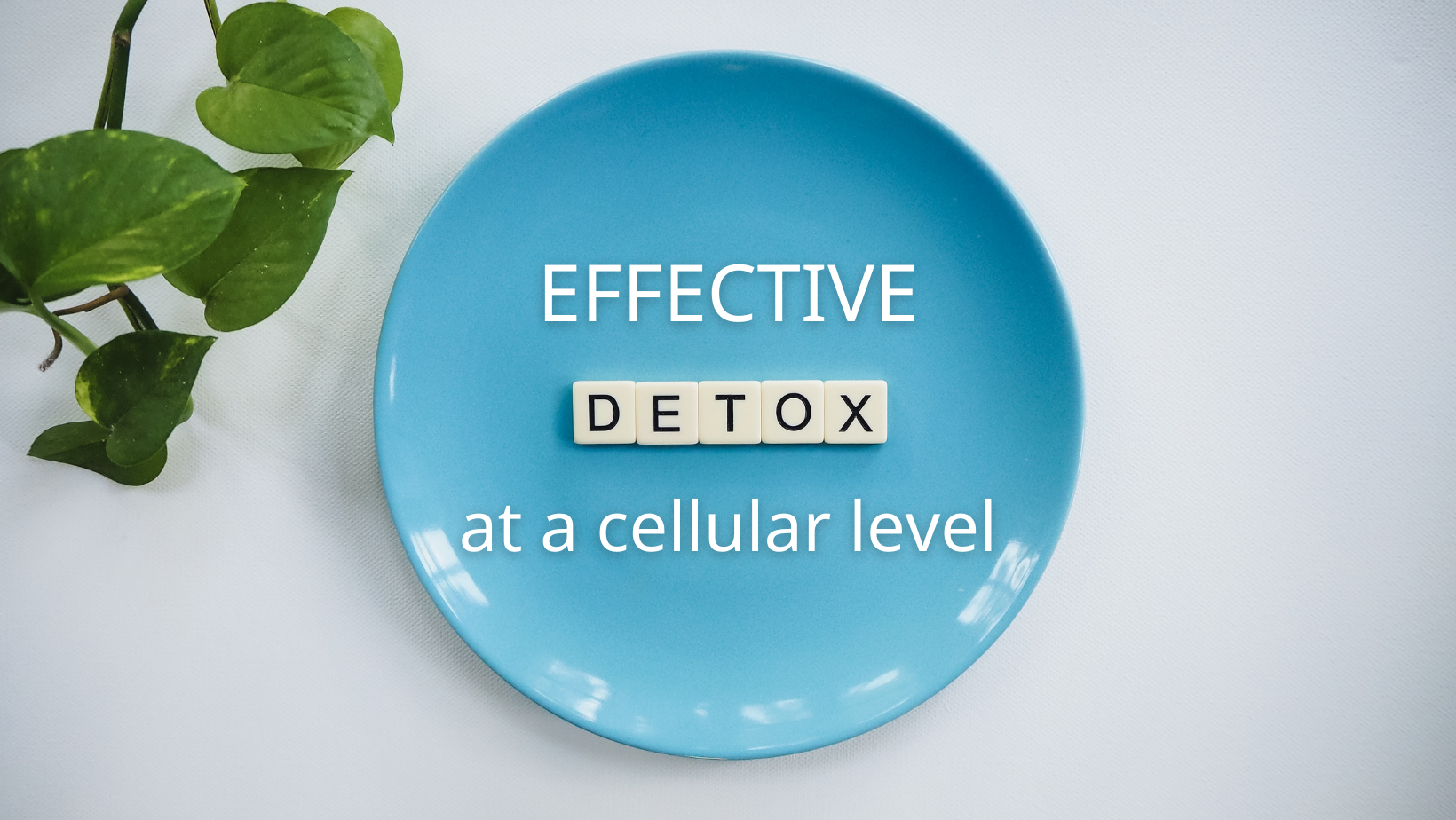Upstream vs Downstream Detox (and why your symptoms keep returning)
Symptoms of toxic overload can present in a number of different ways, but they typically stem from the same root cause: inflammation. Conventional allopathic and alternative detox treatments usually take a downstream approach, which is essentially centered around symptom management and most often focus on liver detoxification.
When we take an upstream approach to detox, we’re investigating the underlying cause for illness rather than simply addressing the symptoms. For example, many people will take probiotics and digestive enzymes to deal with a microbiome disruption, but their symptoms begin to creep back in after a length of time. Toxicity can take years – even decades – to accumulate, and can be challenging to treat with just one or two supplements. Whole body detox incorporates more than supplementation – it’s a systematic approach to getting well at a cellular level through diet, nutrition, and lifestyle practices, alongside treatments and supplements that target the different detox pathways in a number of phases.
What causes toxicity over time?
The most common culprits of toxic overload in the body are trauma, a buildup of neurotoxins, and hidden infection. Let’s look at how each of these factors contributes to inflammation and poor cellular health.
Trauma
Almost all of us will experience trauma at some point in our lives. While no two situations are exactly the same and we’ll respond to the effects of a traumatic event or prolonged exposure to trauma (typically in the form of abuse) in different ways, countless studies have shown both emotional and physiological impacts of trauma that are often far reaching. Anxiety, depression, agitation, insomnia, dissociation, anger, fear and confusion are some of the most common symptoms that follow exposure to trauma. But what happens to the body long after the threat is gone?
The hypothalamic-pituitary-adrenal (HPA) axis is a neuroendocrine mechanism that functions to maintain physiological homeostasis. The HPA axis is the body’s central response system and the mechanism that connects the nervous system and endocrine system.¹ When we experience highly stressful or traumatic situations, the HPA axis responds by stimulating the adrenal release of cortisol, the primary stress hormone. Under normal circumstances, the HPA axis can achieve homeostasis; however, with severe and/or chronic stress, excessive levels of cortisol are released into the body and can become toxic, ultimately leading to illness like heart disease and depression.² In addition to the immediate and enduring physiological impacts of trauma, the sadness, low energy, unstable moods, anxiety and fear we experience as a result can lead us toward unhealthy coping mechanisms, putting further strain on the body and causing increased inflammation.
Toxins
Over the years, we are exposed to an incredible amount of toxins from our environment – through pollution in the air, our water systems, and within household and beauty products – as well as from the food we eat. Heavy metals (primarily lead and mercury), mold, and glyphosate are just a few examples of environmental toxins the majority of us have had significant exposure to. We clean our houses with toxic products and use skincare, makeup and hair care products on our bodies that are rife with harmful chemicals. On top of this, our food and water systems are also guilty of exposing us to toxicity, not only through overuse of preservatives, synthetic chemicals and hormones in meat, and genetic modification, but also within dietary sugars, grains, and bad fats.
Considering what we’re up against here, it seems nearly impossible to avoid toxic overload. Some of the effects of neurotoxicity are fast-acting while others become more apparent after years of bioaccumulation. Either way, the result is inflammatory dysregulation. Disease or disruption in one area of the body can easily affect another; when one system becomes overwhelmed by toxicity, it interrupts healthy communication patterns with your other systems.
Hidden Infection
Typically found in the mouth, these infections are difficult to detect and can cause ongoing issues for us. Cavitations in the jaw that result from extractions (as with wisdom tooth removal, for example) can harbour harmful bacteria that gradually work their way into the bloodstream and create major immunity disruption.
Periodontitis (or gum infection) has been linked to a number of other illnesses, including diabetes and heart disease. How are these issues connected? Inflammation in the mouth appears to weaken the body’s ability to control blood sugar, impairing the utilization of insulin. High blood sugar creates an ideal environment for infection to grow, which is why this two-way relationship between periodontitis and diabetes can be so difficult to manage. In the case of heart disease, there is a theory that inflammation of the mouth causes inflammation in the blood vessels, which can increase the risk of heart attack.³
What are some common symptoms of toxicity?
- depression
- brain fog
- migraines
- fatigue
- sleep issues
- allergies
- severe PMS
- eczema
- memory impairment
- arthritis
- sinus issues
- digestive disorders
- frequent illness or infections
- hormonal imbalance
- constipation
- bloating, gas
How does an upstream approach to detox differ from symptom management?
Our naturopathic physicians take a whole body, systematic approach to getting to the root of toxicity and creating a cellular environment that encourages deep healing and vitality.
First, we have to remove any potential sources of toxicity in the body that are currently present (perhaps through eliminating any toxic products in your home and diet, undergoing amalgam filling removal with a biological dentist, or pursuing chelation therapy, etc.), while improving our natural cellular detox pathways; we ensure we open the downstream detox pathways of the liver, gut, lymphatic system and kidneys to encourage proper elimination throughout the entire detoxification process.
Next, we need to heal and support the cellular membrane to allow for proper functioning, adequate absorption of nutrients, and efficient waste removal. As vital nutrients begin to flow more freely into the cell, we’ll achieve higher production of ATP, which is the energy-carrying molecule in the cell responsible for fuelling other cellular processes in the body. This process will help to downregulate inflammation and upregulate our cellular detox pathways.
As the we support the cell and the body becomes more adept at combating inflammation, it’s critical that we practice healthy lifestyle habits and maintain a diet that supports optimal health and increases resilience (we offer in-depth tips, practical tools, and balanced recipes to support you with this in our detox programs at Divine Elements).
Finally, we focus on restoring methylation, which is a biochemical process that’s essential for normal detoxification and hormone balance, as well as contributing to the proper functioning of our nervous, immune and cardiovascular systems.

What are some simple ways to support natural detoxification?
- Drink lots of water
- Reduce processed foods and sugar
- Eat detox-supporting foods
- Limit alcohol intake
- Improve sleep patterns
- Include daily exercise or movement
- Choose natural products (skin and hair care, cleaning products)
- Support lymphatic drainage
The foundation of a supportive and sustainable detox process is making healthy lifestyle and dietary choices. There is no quick fix, and your habits, thought patterns, and the things you put in (and on) your body will have an enormous impact on your ability to detox.
Please reach out if you’re interested in joining us in an upcoming detox challenge with the support of Drs. Nick and Sonya Jensen, ND along with Registered Holistic Nutritionist, Melissa Alonso. Spots are limited, so we recommend registering for this exciting new program early to ensure you don’t miss out! Find more details here or claim your spot now.
Sources:
1) https://www.frontiersin.org/articles/10.3389/fnbeh.2020.601939/full#:~:text=The%20hypothalamic%2Dpituitary%2Dadrenal%20axis%20is%20a%20complex%20system%20of,function%20to%20maintain%20physiological%20homeostasis.&text=Together%2C%20these%20changes%20can%20potentially,and%20metabolic%20functions%20in%20adulthood. – Frontiers in Behavioural Neuroscience: January 2021
2) https://www.psychologytoday.com/us/blog/the-addiction-connection/202103/how-trauma-affects-the-body – Psychology Today: March 2021
3) https://www.webmd.com/oral-health/features/oral-health-the-mouth-body-connection – Oral Health: the Mouth-Body Connection, by Joanne Baker



